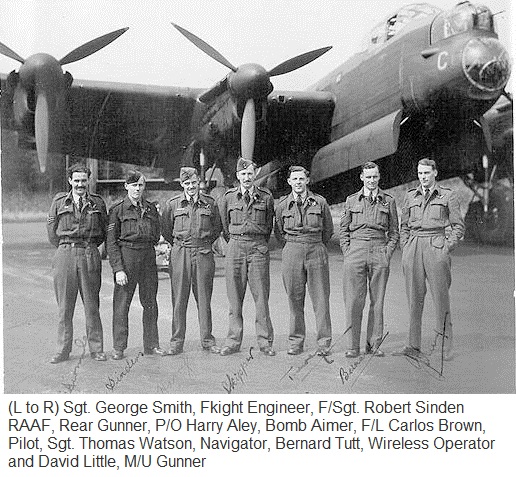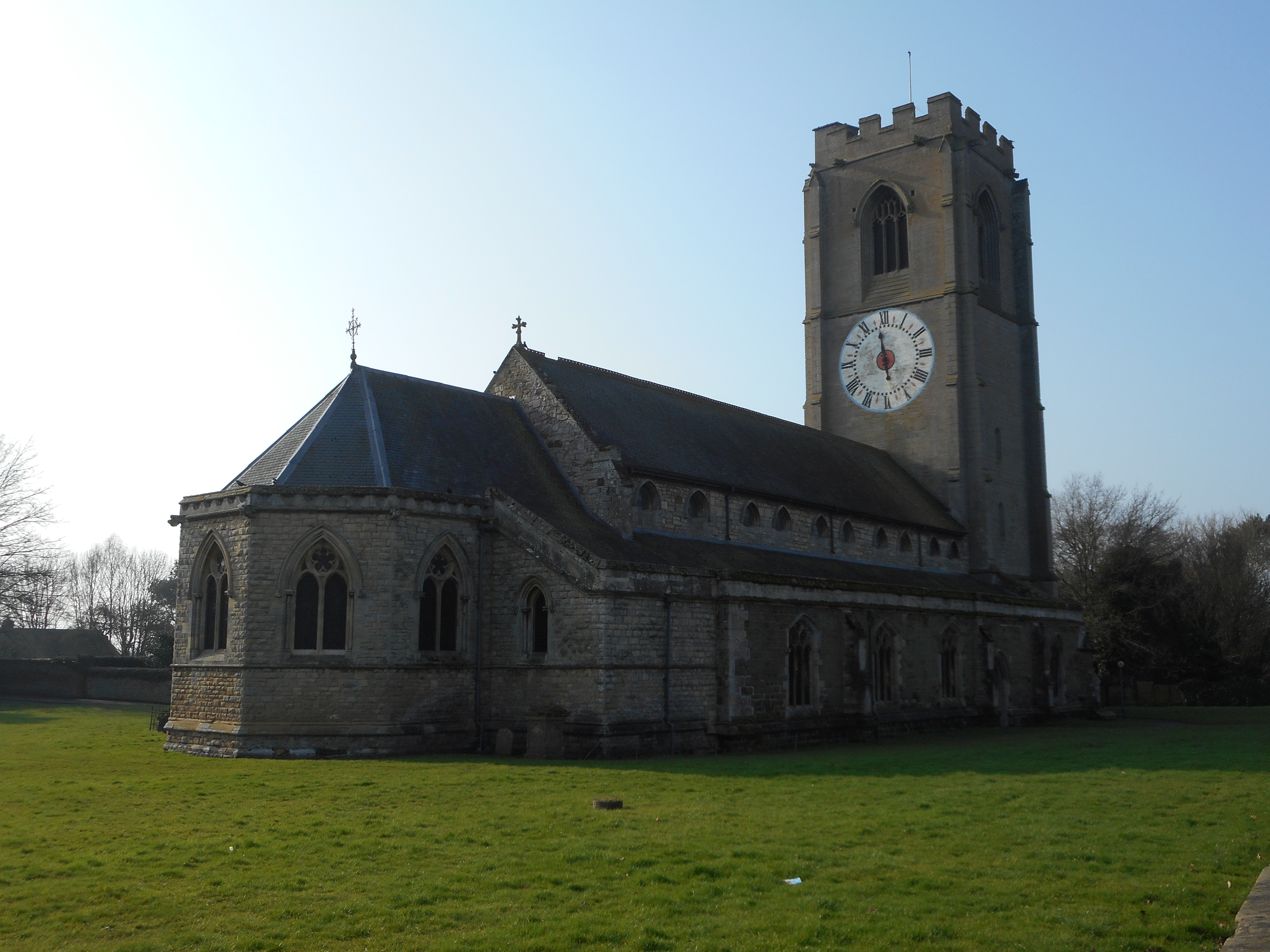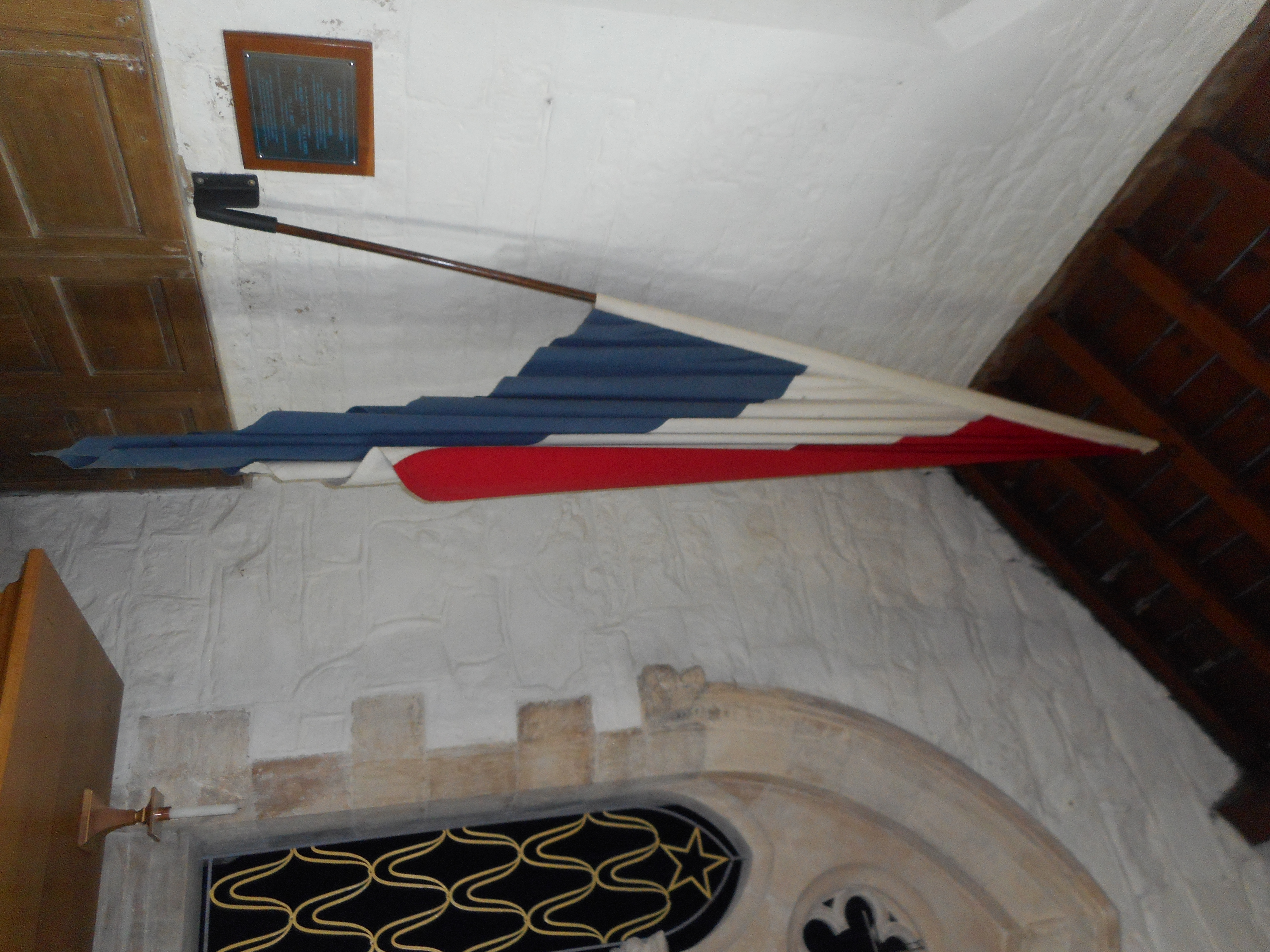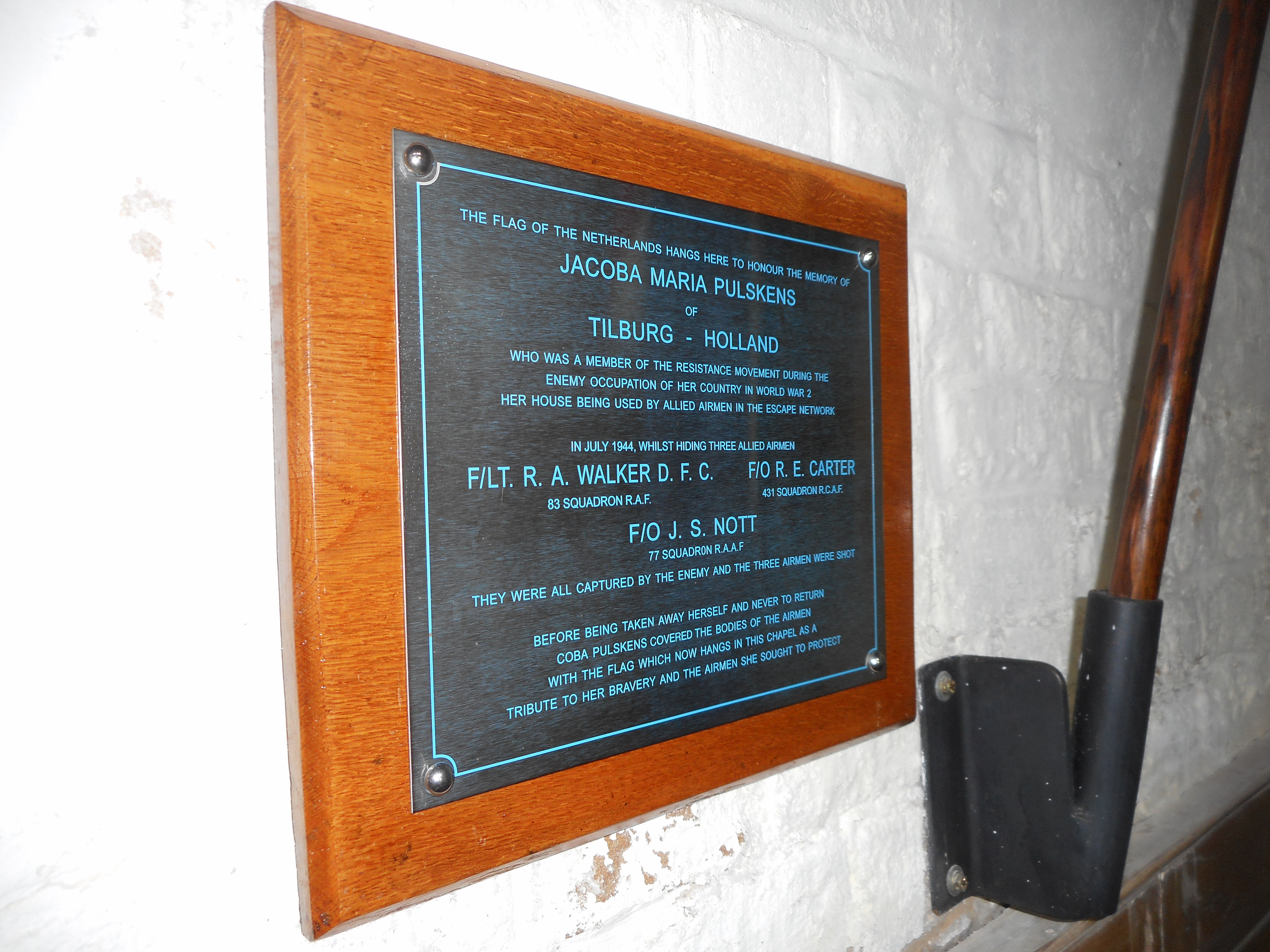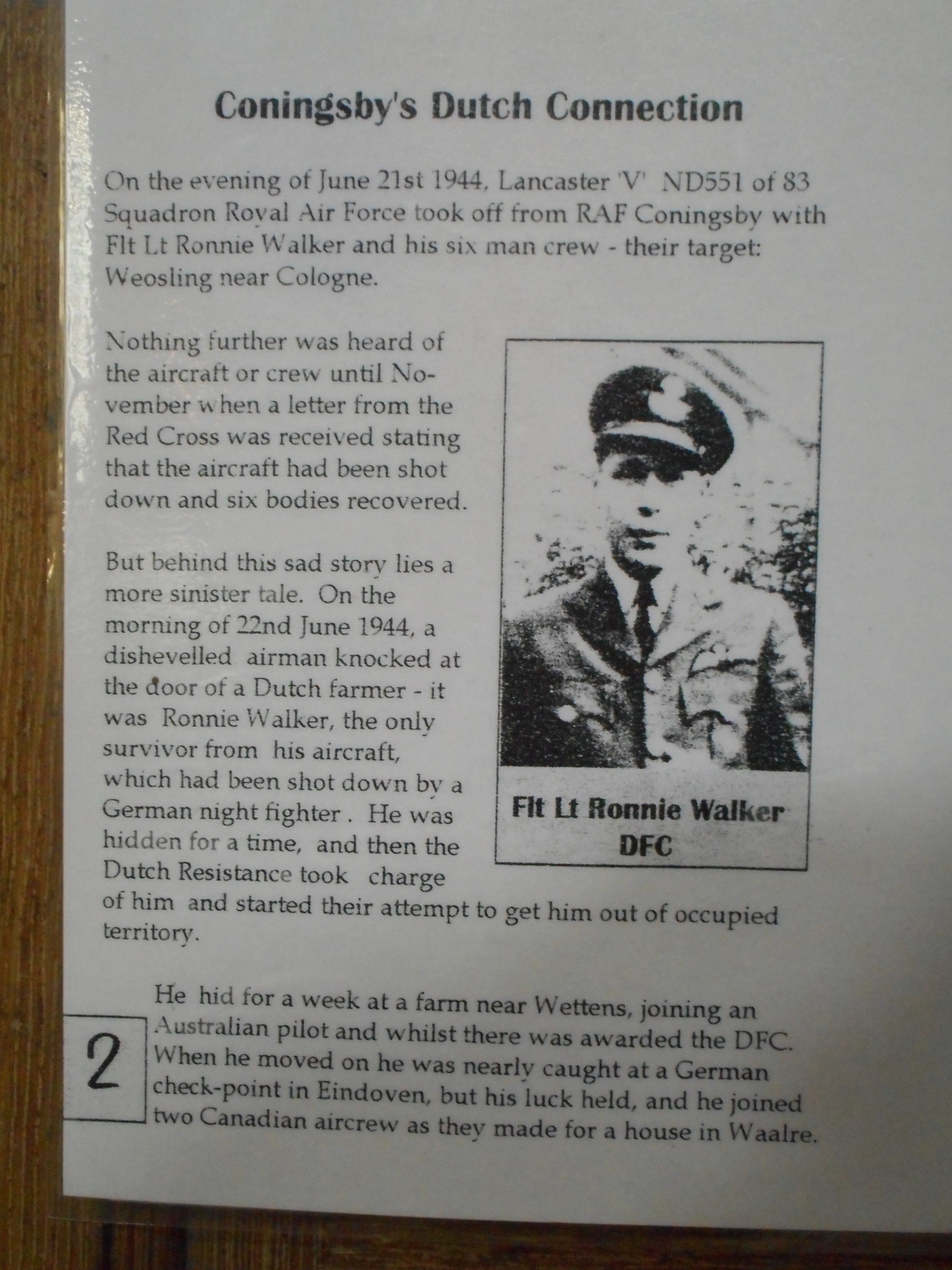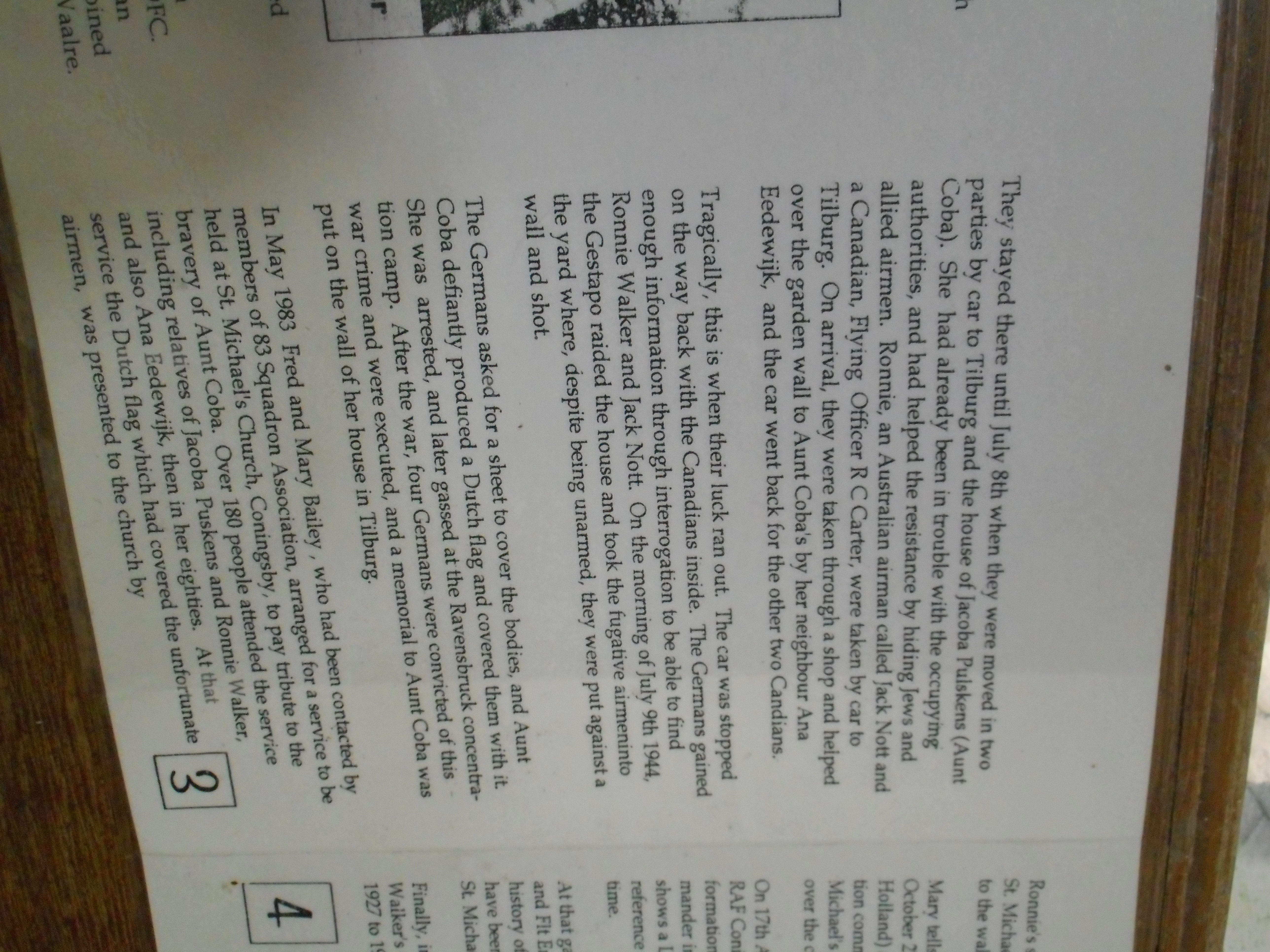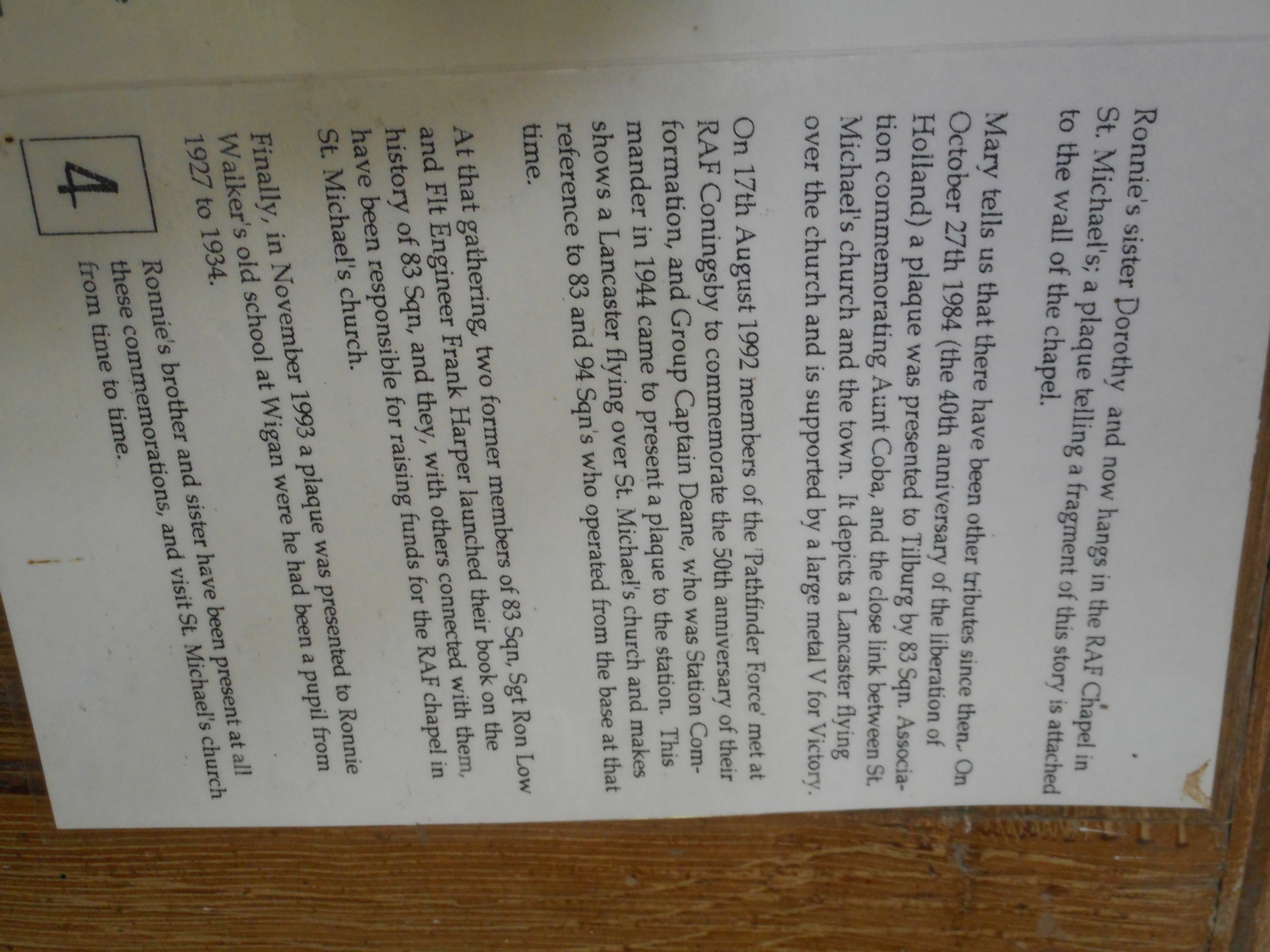Aley, Harry Charles
Personal Information
| Rank | F/O |
| Forename(s) | Harry Charles |
| Surname | Aley |
| Gender | M |
| Age | 26 |
| Decorations | |
| Date of Death | 26-11-1943 |
| Next of Kin | son of Harry Aley and Elsie Edith Aley (née Matthews), of Ongar, Essex. Husband of Isabella Mabel Aley (née Brown). Date of marriage 14 September 1943. |
Aircraft Information
| Aircraft | Avro Lancaster III |
| Serial Number | JB221 |
| Markings | OF-W |
Memorial Information
| Burial/Memorial Country | Germany |
| Burial/Memorial Place | Durnbach War Cemetery |
| Grave Reference | 2. H. 10. |
| Epitaph |
IBCC Memorial Information
| Phase | 2 |
| Panel Number | 122 |
Enlistment Information
| Service Number | J/21609 |
| Service | Royal Canadian Air Force |
| Group | 8 |
| Squadron | 97 (Straits Settlements) |
| Trade | Air Bomber |
| Country of Origin | Canada |
Other Memorials
| Location | Church of the Holy Spirit, RAF Coningsby, Coningsby, Lincolnshire |
| Country | United Kingdom |
| Memorial Type | Stained Glass Window |
| Memorial Text | A stained glass window remembering 97 Sqn in the Church of the Holy Spirit, RAF Coningsby |
Miscellaneous Information
| Born 22 August 1917 at Ongar, Essex, England. He was one of three sons and had a brother Frederick George and a second named John Alexander. The family lived in Vancouver. After nine years of schooling, seven at Public school following the Elementary course and two at High School, (2nd year), Harry worked as a Salesman for two years with Robertson Bakeries and for over four years with Plummer, Craig Ltd, Log brokers as a clerk. Between 7 May 1936 and 6 September 1939 he served with the 72nd Seaforth Highlanders, Vancouver as a Corporal. |
| Harry enlisted on 20 September 1939. After initial training in Canada, he embarked for the U.K.and reported to 3 PRC in Bournemouth on 13 January 1943. He then went through the various training centres such as 9(0) AFU on 9 March 1943, 16 OTU, 1660 CU, 50 Sqn., Skellingthorpe, 14 August 1943 and then on to 97 Squadron. |
| Harry enjoyed all kinds of sports. |
Commonwealth War Graves Commission
The National Archives
| Record of Events (Operational Record Book) AIR 27/767/22 |
| Summary of Events (Operational Record Book) AIR 27/767/21 |
Fellow Servicemen
Last Operation Information
| Start Date | 25-11-1943 |
| End Date | 26-11-1943 |
| Takeoff Station | Bourn |
| Day/Night Raid | Night (3% moon) |
| Operation | Frankfurt. 262 aircraft, mainly Halifaxes. 12 losses (4.6%) with no diversionary raids. The German controller correctly surmised that Frankfurt was the target. Cloud cover led to scattered bombing and it is thought that fewer than 100 bombs landed on the city. 80 deaths on the ground and 1500 people were bombed out |
| Reason for Loss | Shot down by a Bf110 flown by Oblt. Eckart-Wilhelm von Bonin of Stab II/NJG1 at 02:45hrs and crashed at Brandau, SSW of Reinheim, Germany. This was Bonin's 25th claim. |
